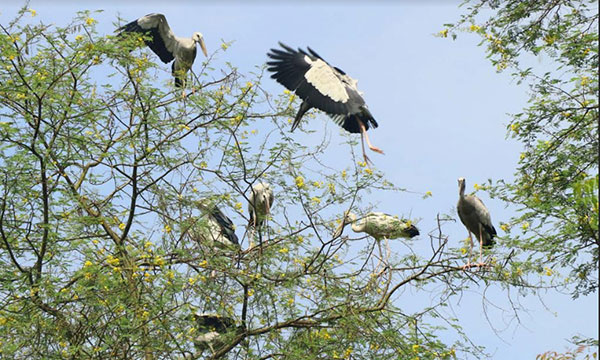Openbill stork: Beauty of Rajshahi nature

People of the vicinity enjoy the sound of birds’ chirping at Shimla Park, situated behind Rajshahi central jail, in the morning.
Green trees are aligned on two sides of roads in the park where large openbill storks with black-and-white lips and nails are seen.
On the south of the Central Jail, the birds stay on top of big trees from evening up till morning. The birds go for to the river for preying their foods in shallow water, and fly in the sky with rising of sun in the upper sky.
Locals say there were more birds in the past. But due to the cutting of large trees, the birds have become rare. However, the openbill storks are seen again.
Wildlife Management and Nature Conservation Department, Rajshahi’s wildlife inspector Jahangir Kabir said Openbill stork is our country's bird. The bird's lip is long. They usually go to marshlands, paddy fields, and river areas for food.
They usually do not migrate to another place unless they face lack of food and security. In search of food in the morning, they leave the habitat and move out to the swamps. They walk on mud and looks for their food. They eat small fish, insects, frogs and crabs.
Openbill storks’ breeding started in the rainy season, he said. Their breeding season is from July to September. They make their nest beside the nest of Heron and Pankauri. It takes 5 to 15 days to build the nest.
After making the nest, birds start to lay egg. They have 3 to 5 white colored eggs. However, they are careful while laying eggs because crows eat up their eggs on opportunity. So the female bird stay in the nest and another bird goes in search of food. The hatching of eggs prolong for 25 days. Storks bring food to their nest in their mouth and feet from different places to feed their chicks.
Humayun Kabir said there are a lot of openbill birds in Rajshahi University campus also. They look for food in the university's pond and make their nest on the university's big tree. Besides, they are seen on the banks of river Padma.
